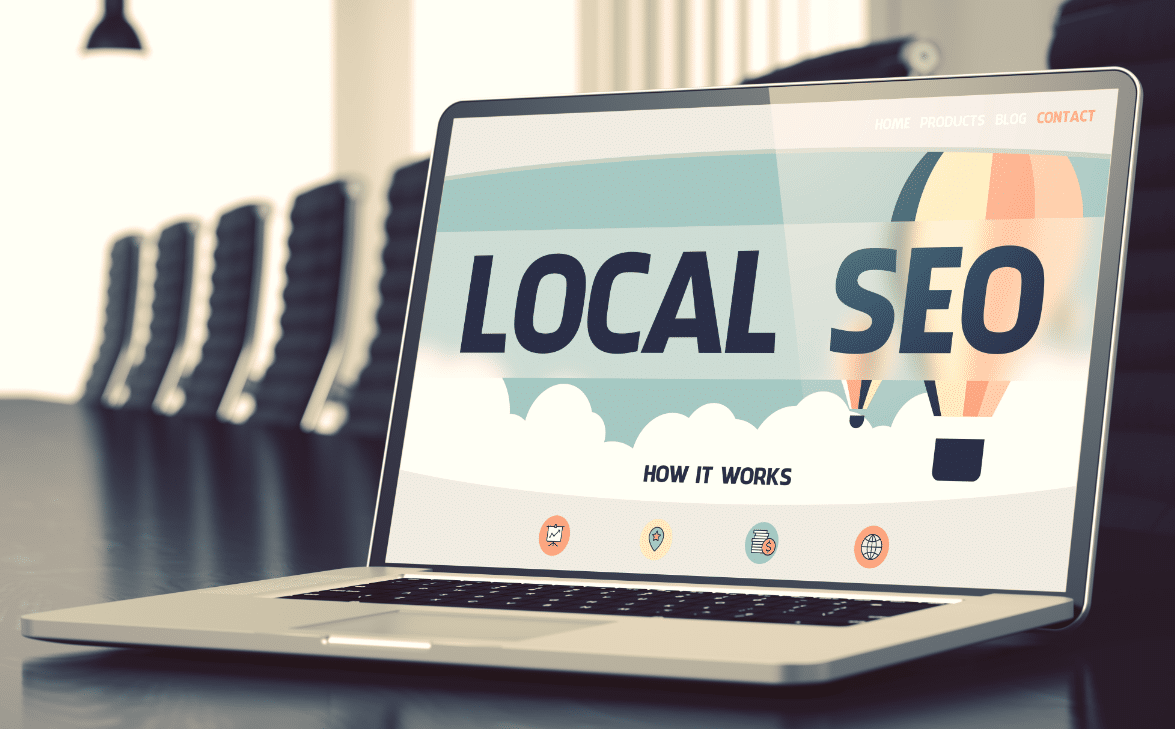Going digital is one of the most important decisions you can make for your small business. The digital world offers endless communication potential and gives you an opportunity to answer customer queries before you lose them to your competition.
Most businesses limit their digital strategy to social media and website management. Small businesses or startups creating their digital identity tend to start on social media and top it up with their website. However, no digital strategy is complete without local SEO.
Local search is a powerful tool for small businesses to cement their identity and answer consumer queries. Almost four out of five consumers use Google search options to find local information on businesses operating in their vicinity.
In simple terms, this means that 80 percent of your consumers prefer searching for information related to your business, your niche or your local industry on Google, than by messaging you on social media or checking your website. If you don’t optimize your local strategy, you will be missing out on 80 percent of your potential customer base.
In a bid to help you optimize your small business for local SEO, we have created a comprehensive guide on local SEO. This guide will cover all relevant local SEO tools and techniques, at the end of which you will be able to extend your reach to new customers and will be able to kick-start your local SEO campaign.
What Is Local SEO?
Before we jump into the nitty-gritties of local SEO and the tools and techniques you should follow to improve your local SEO, we will first define what the term actually means. Local SEO helps local businesses promote and market their products and services to all local customers and prospects.
Local searches make up a significant portion of all searches on Google, which is why the search engine gathers local content, links, citations and social profile pages to generate local results that will be relevant to the user.
If you own a pizza parlor in Poughkeepsie, NY, you will want your business to pop up whenever a prospective customer looks up the search phrase ‘best pizza place in Poughkeepsie’. This allows you to stay relevant with your local consumers and to also seal possible leads.
Customers head toward local search options on a search engine when they are about to make a purchase, but aren’t sure of their option. Customers who have interest and desire to purchase a product are easy to convert. All you need to do is catch their attention by improving your local SEO.
Improving Your Local SEO
The tips, techniques and tools we mention in this article can seriously help you improve your local SEO campaign:
Optimize Your Business for Google My Business
Google My Business or GMB has popped up as an amazing opportunity for businesses to attract local clients. Google My Business offers the crème de la crème of local search, where you can input authentic information that Google can eventually verify.
Google My Business is a tool by Google to help your business meet the expectations set by Google. If the search engine can verify your business in the information you have mentioned on your GMB page to be authentic, the search engine will reward your business with a special mention in their local search results.
To ensure you aren’t missing out on this opportunity, you should start by creating and verifying your Google My Business page. Once you have created your page, you should encourage all consumers to leave you a review on your page. Ask consumers to specify location and narrate their experiences.
Once you have reviews coming in from consumers, you should reply to them. Your reply should include the city/state you serviced the customer in and how your company would like to service them again.
Mobile Friendly Website
Believe it or not, but almost 90 percent of all users conducting local searches do it through their smart phone devices. These mobile phone users will most definitely land on your website, in their quest to get their hands on the best local products and services.
Most mobile phone users visit your site to look up reviews, search for contact information or find directions to your store location. All of these users will have a hard time navigating through your website, if it isn’t meant for local users.
Make it easy for your prospects and build a mobile friendly website; because, the easier it is for your prospective customers to analyze you, the faster they will convert.
Improve Internal Linking Structure
Most businesses today know about search engine optimization or SEO in one way or the other. Some know about it in greater detail, while others aren’t as well versed, but the fact of the matter is that no business with digital presence is ignorant to this term.
Now, since local SEO is still a form of SEO, you should strengthen your presence through typical, effective SEO techniques. Adjusting your internal linking structure can help get you the kind of results you want and can most definitely improve your SEO results.
Why is internal linking so important? Because, it does the following:
- Supports website navigation
- Distributes ranking power and page authority across different pages on your website
- Assists viewers with website hierarchy and information architecture
There are plenty of resources you can read and follow online to improve your internal linking structure and get the end result of better SEO from it.
Add Location Pages to Website
Most businesses have a few scattered locations across a city or a state. Continuing our example of the pizza parlor from Poughkeepsie, imagine you now own separate stores in different locations including Manhattan, Staten Island and other nearby places. Obviously, you wouldn’t want your web page to still be targeting Poughkeepsie or one of these locations.
Location pages offer a solution to your problem of multiple brick and mortar locations. You can optimize the same website you have to include information on all your locations. Draft separate location pages to talk about the different locations you share. Your location pages should also provide readers with your address, name, store hours, phone number, parking/transit information, store descriptions, testimonials from customers and promotions.
While you might be tempted to do so, DO NOT copy and duplicate content across all location pages. Draft separate pages for all locations to keep originality intact and to ensure that you don’t catch Google’s wrath. You can also score big by adding a Google Map to your website, guiding viewers to your respective locations and their pages.
Optimize URL, Headers, Title Tags, Content and Meta Description
All businesses have an amazing opportunity to improve their SEO rating with every blog post they post on their website. Every new blog post you put on your page is a new way for you to optimize your website for local SEO. All of your blog posts are separate indexed pages, giving you new opportunities to target geographic search phrases and be found in the search engine result pages or SERPs.
Make it a habit to optimize everything related to a blog post whenever you write and add a piece of content to your website. You can optimize SEO in your content by using high-volume and effective keywords in your URL, header, title, body and meta description. If you have any trouble coming up with geo-targeted content, then consider highlight case studies and customer success stories.
Ensure All Your Details Are Consistent Online
You have really got to make it easier for search engines and prospective consumers to find you online. As a means to ensure that your details are consistent across all platforms, you should set up your Name, Address and Phone Number in the form of crawl-able HTML text on your website.
Do not input all these important details in the form of an image, as your images cannot be crawled across search engines like HTML text can be. The most convenient place to position your NAP content is on the footer or the header of your site.
Make sure that you also make the required amendments if you change your phone number or your address. All information pertaining to your business should be consistent across the internet. Do not confuse your consumers with outdated numbers that don’t work anymore.
Create Local Content
Google is a lot smarter today than it was back in the day. Gone are the days when website owners could post a ton of gibberish with creatively added keywords to rank well in local results. Google’s enhanced smartness means that you are now required to write for humans and not search engines.
While writing about general topics might offer you the attraction of a wider crowd, sometimes it is better if you hone your focus on the local industry. Writing on news related to the local industry will help you generate attention from local consumers – people who will actually buy from you.
Most businesses have succeeded by becoming the local authority on all happenings in their industry. Don’t try to focus too much on salesy or promotional content, instead, think of content that goes beyond what you sell.
A local security industry can focus content on their website to help local businesses get well-acquainted with the city. They can post helpful resources on where new businesses can get the resources they require; ultimately positioning their security agency as the one these local businesses can and should trust.
Get Inbound Links of Relevance and Authority
Inbound links offer you an amazing opportunity to boost your local SEO. Every inbound link works as a stamp of authenticity, alerting Google that you can be trusted as a business. Inbound links also raise your authority as a domain.
Some of the methods you can follow to generate inbound links include:
- Working in sponsorships or partnerships with other brands
- Scholarships
- Guest Blogging
Start by building your own personal network, which includes the business improvement districts, the Chamber of Commerce, licensing bureaus, resellers, trade associations and other affiliates.
You can also consider sponsoring trade shows, meet-ups and webinars. Also host community events, promote activities and build relationships with prominent bloggers and influencers around you. Feel comfortable reaching out to partners so that you can feature each other on your partner directory.
Being a guest blogger can attract to you the kind of links you are looking for. Talk to other people in your industry and act as a thought leader. If you are an active participant in your local community, the buzz surrounding you will grow, leading to more mentions and inbound links.
Engage on Social Media
Google now considers content shared on social media even more important than before. You can engage with consumers on social media and also share posts on your Google My Business page to attract attention from Google.
Local SEO Tools
Now that you know ways to optimize your business for local SEO, let us explore some of the useful tools you can follow to leverage your rankings.
- Whitespark Local Citation Finder: Citations matter, because they help local businesses in online searches. Whitespark knows how to manage local listings and robustly build your citations, at a modest cost.
- Screaming Frog: Available for free, Screaming Frog offers a free starter package to crawl website links, images, apps and CSS scripts from your website. It also helps you remove 404s and optimize content.
- Moz Local: Moz Local ensures that your business listings are verified by both Facebook and Google, and distributes your information across the search ecosystem. You can gain visibility by using Moz Local.
Local SEO is an integral part of any SEO strategy. If you are a local business, local SEO helps your audience find you when they reach out to businesses in your industry online.








0 Comments